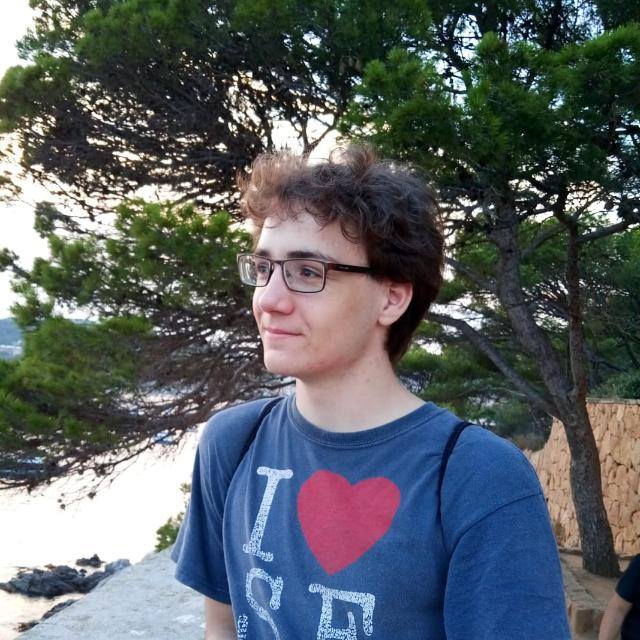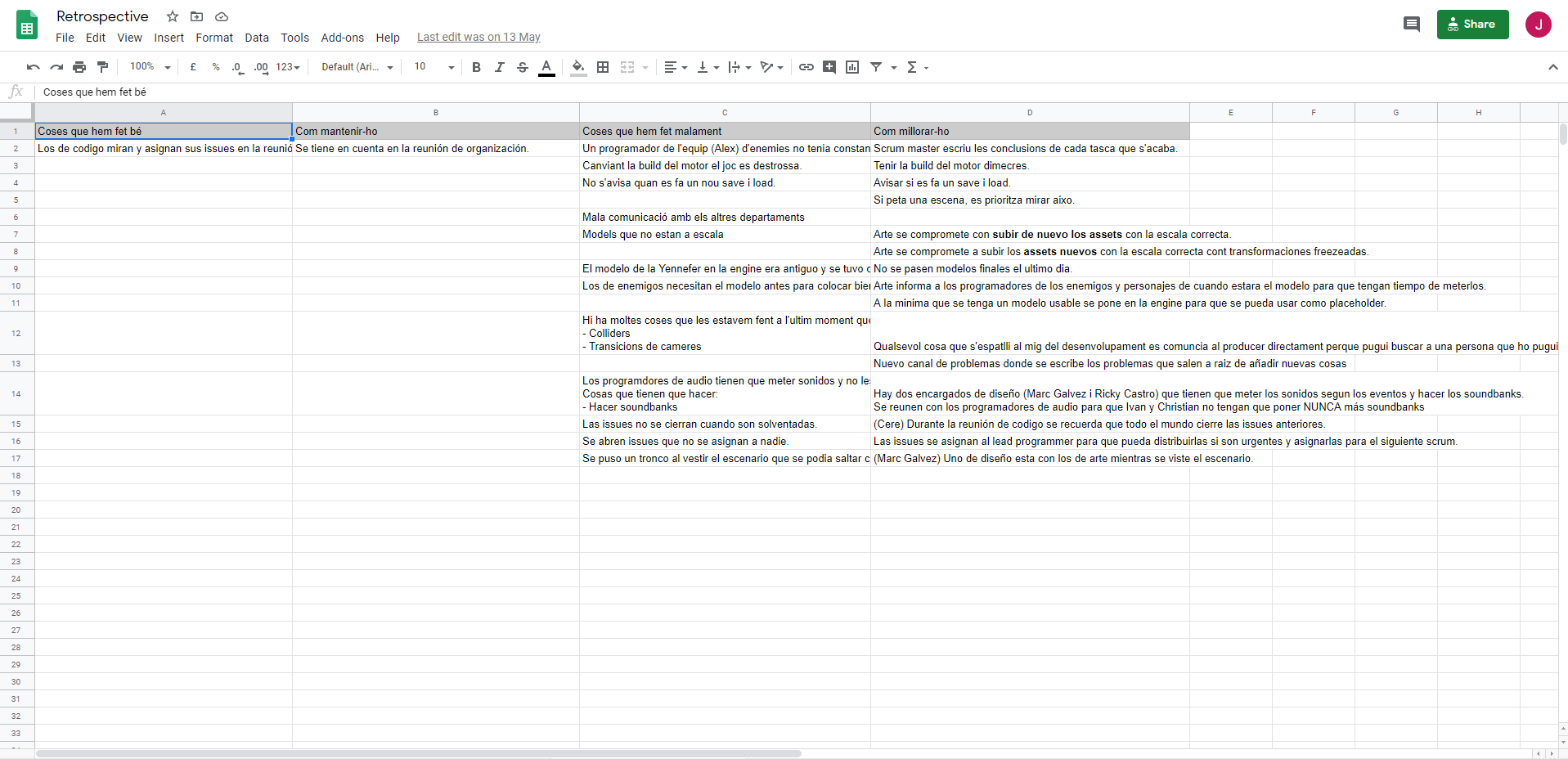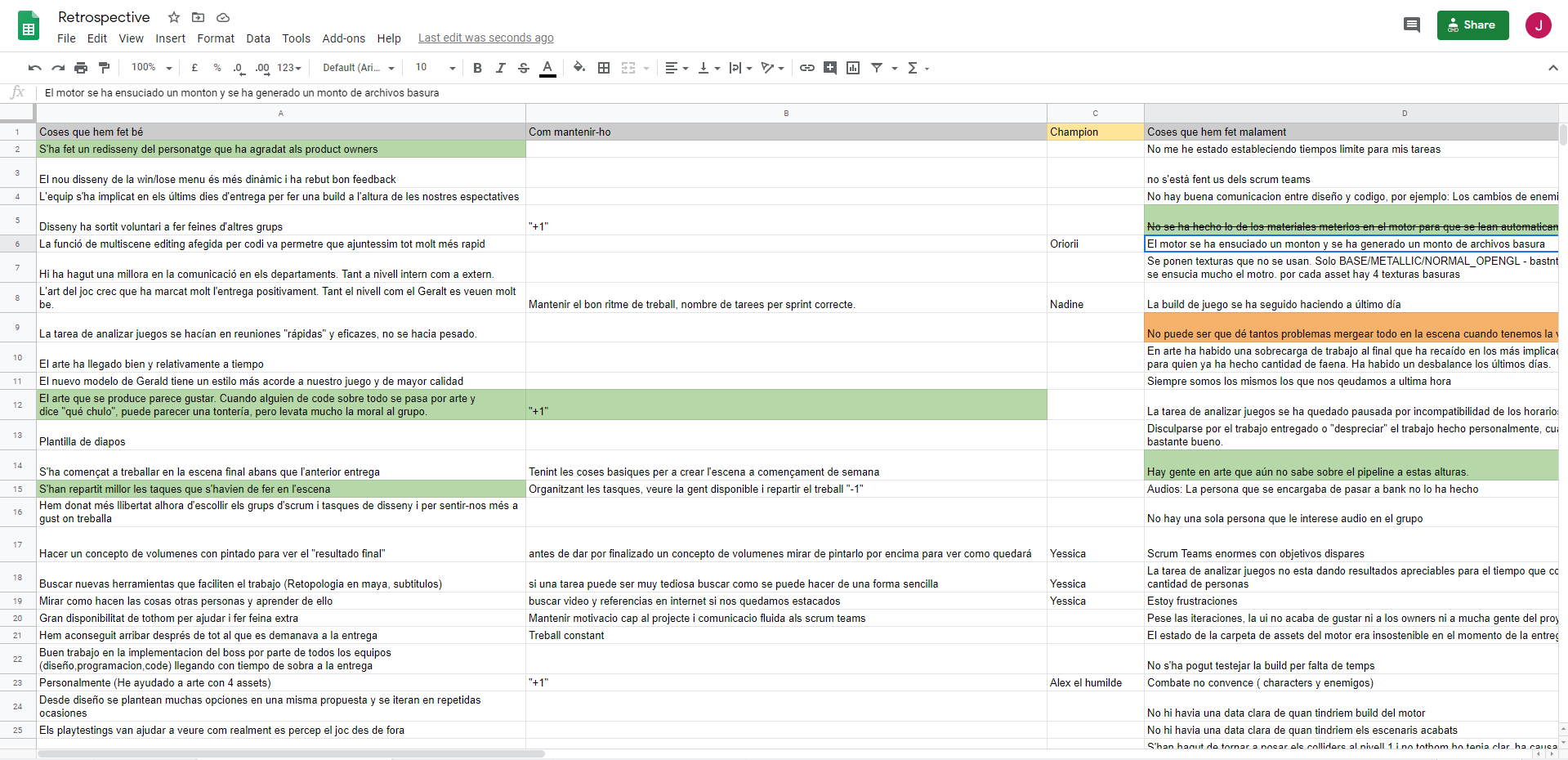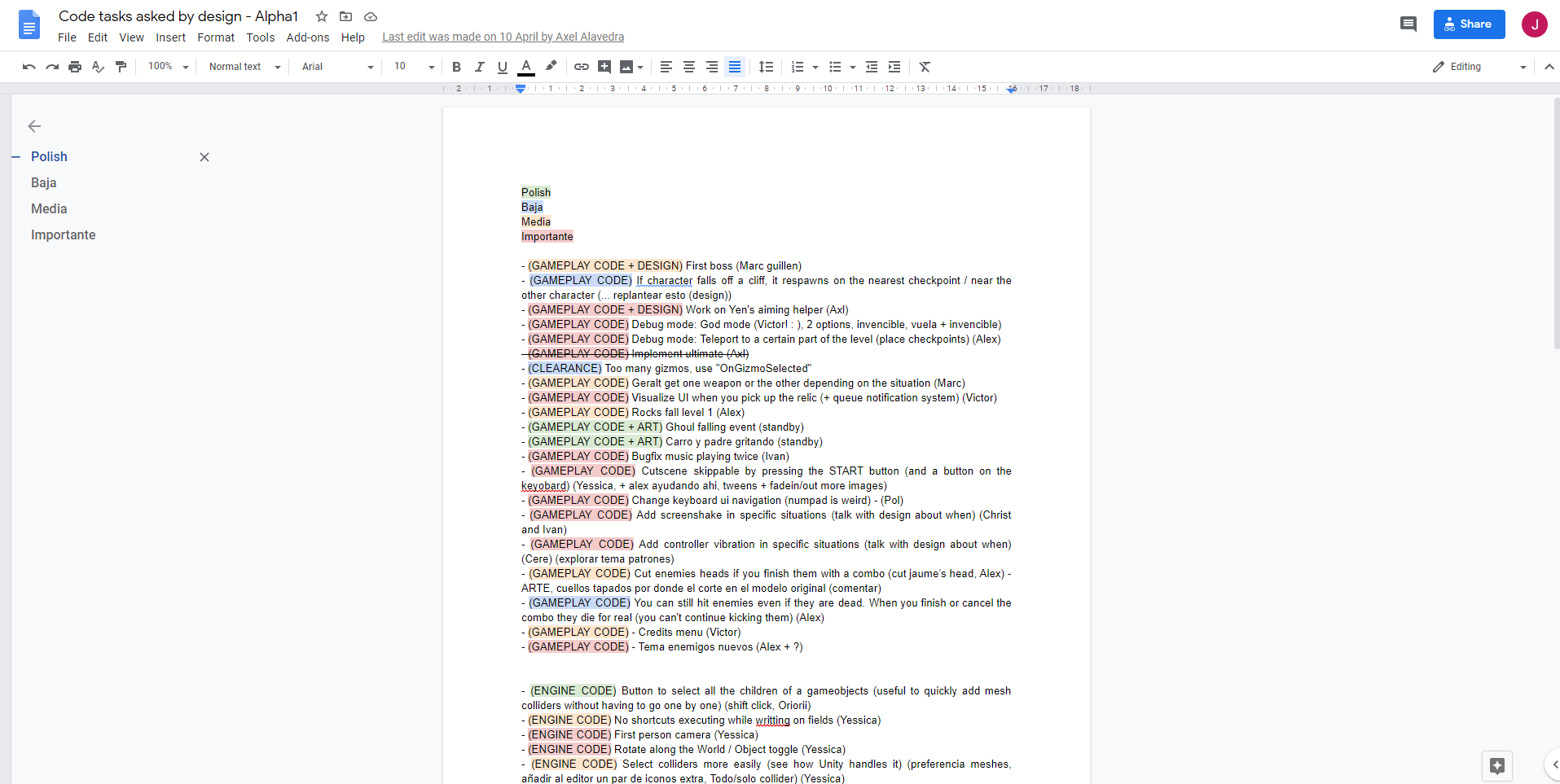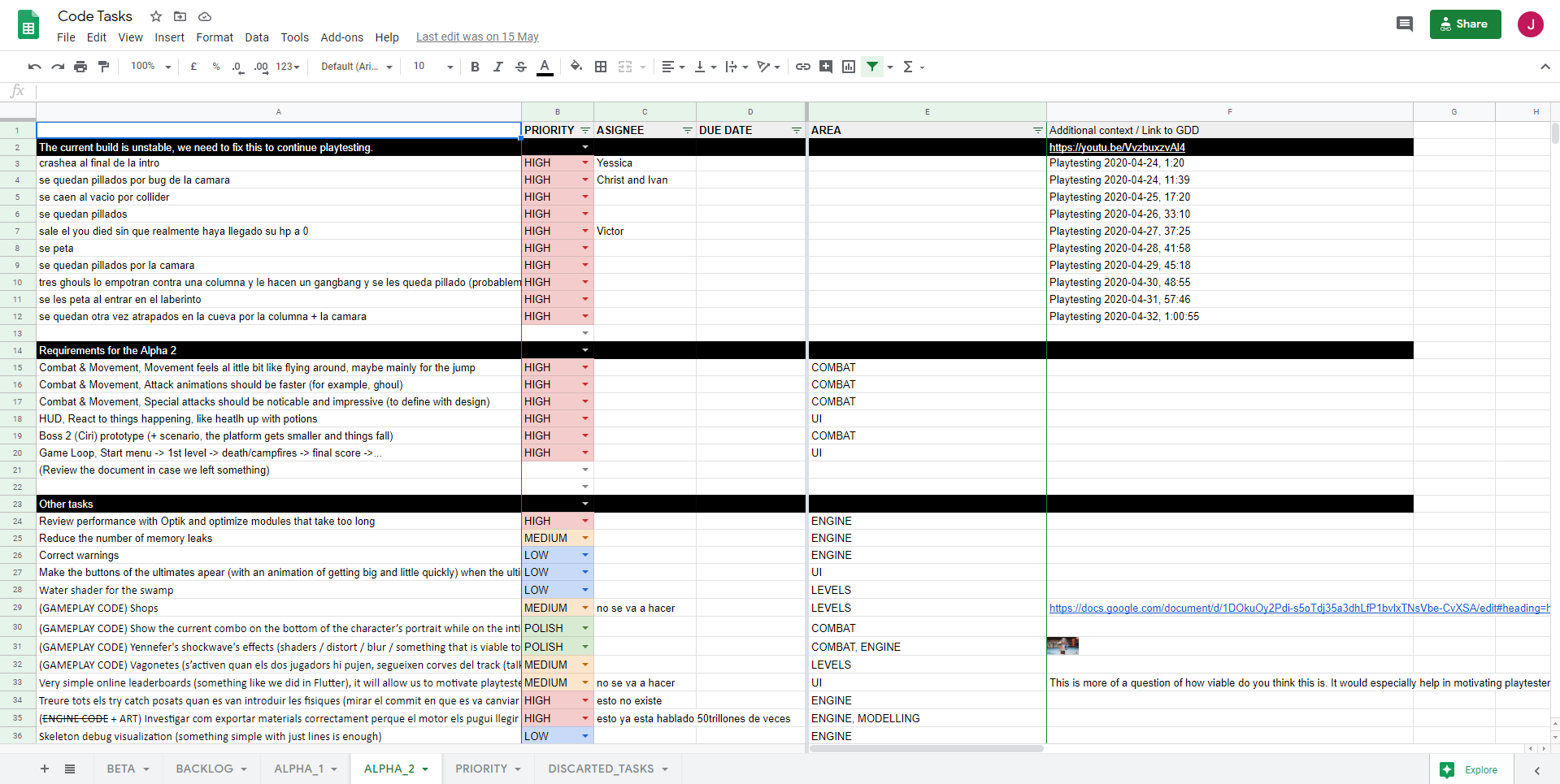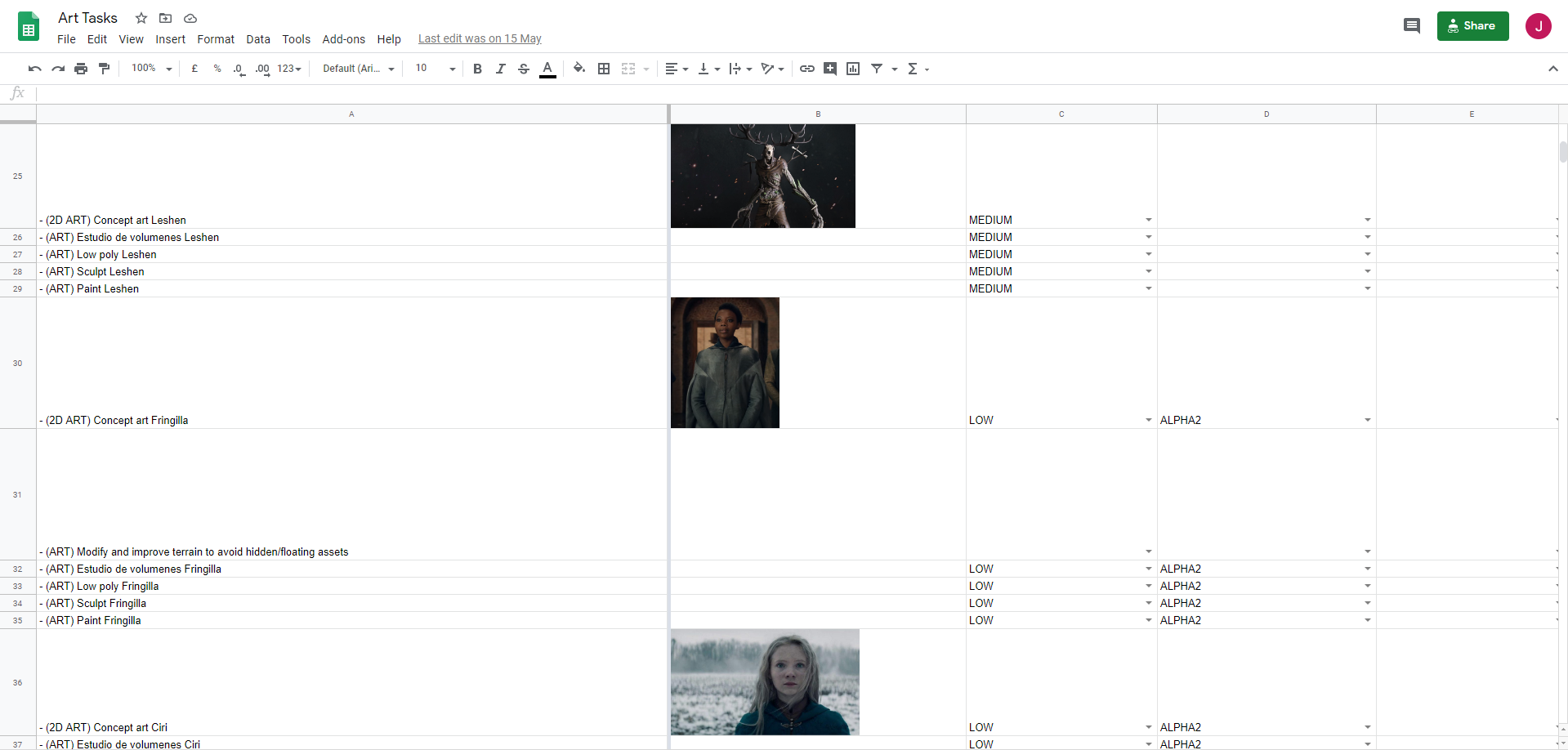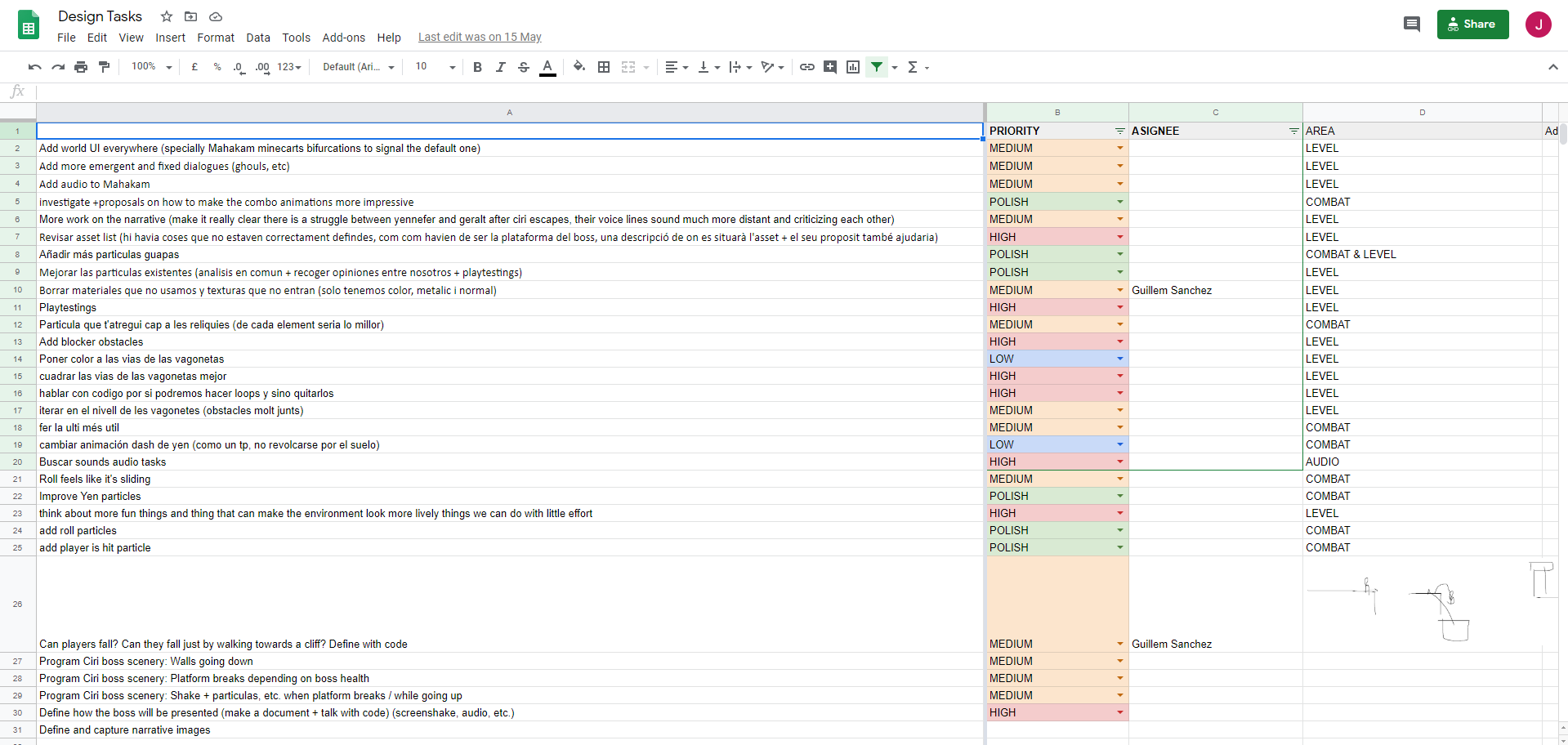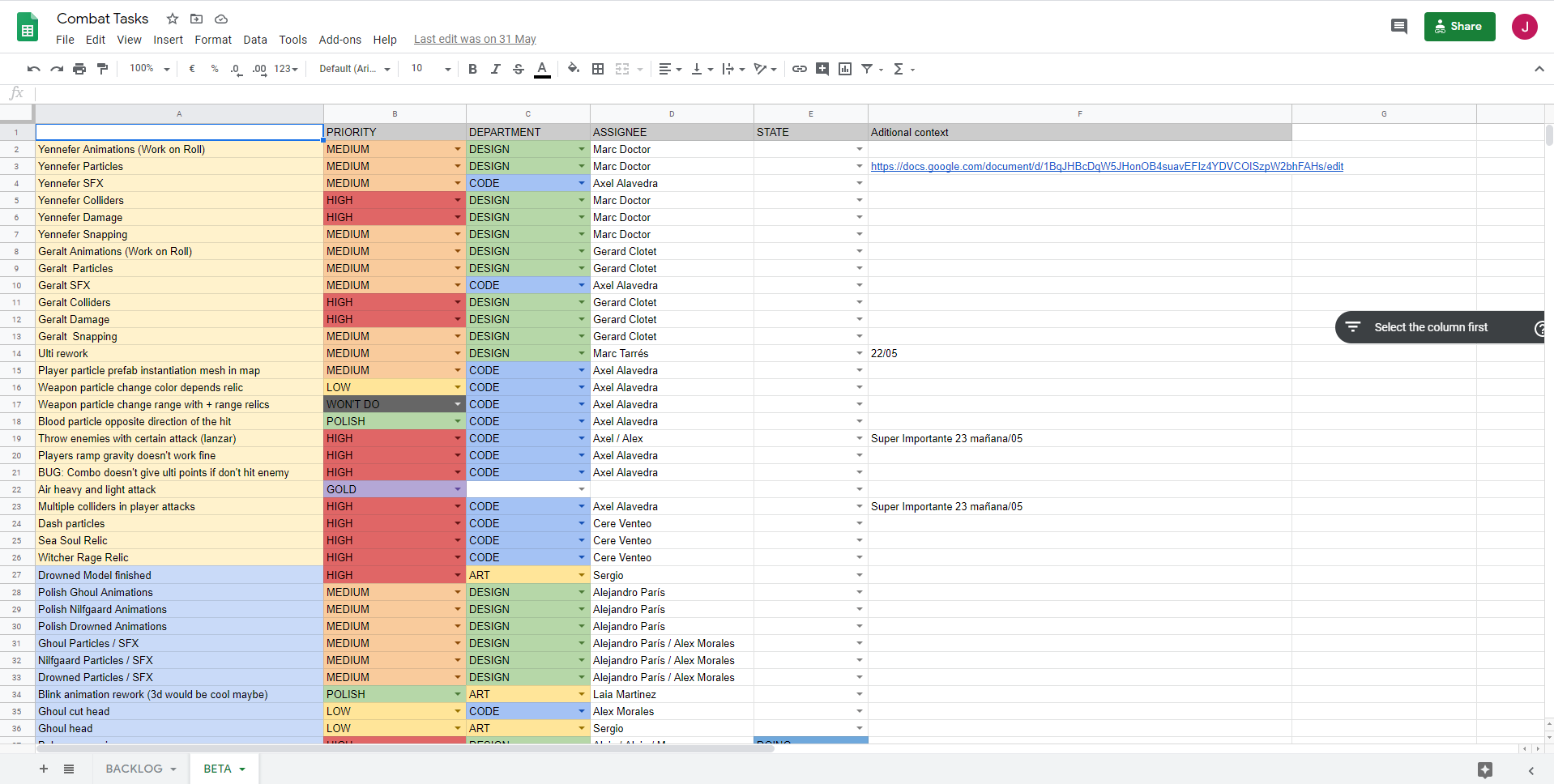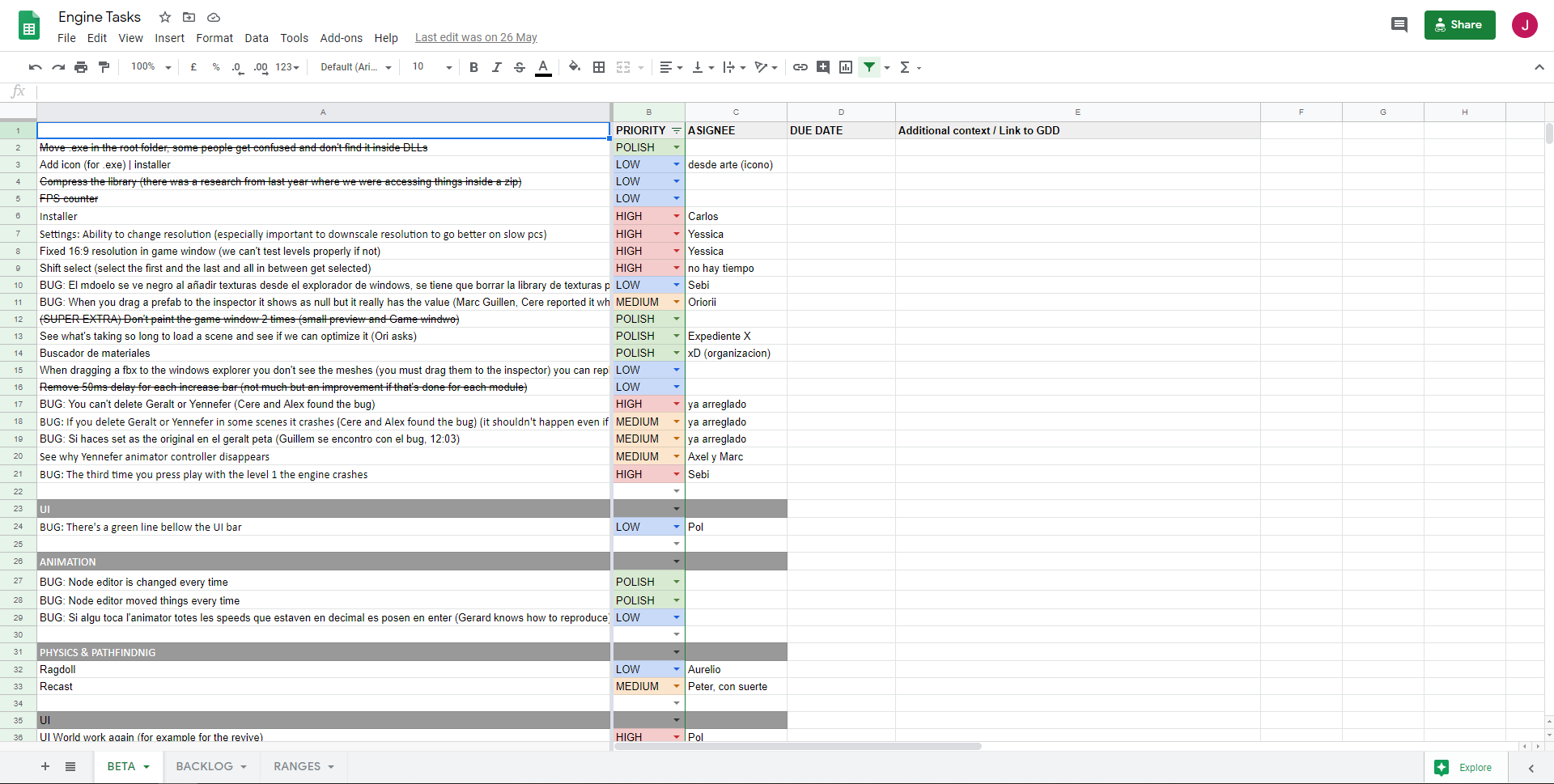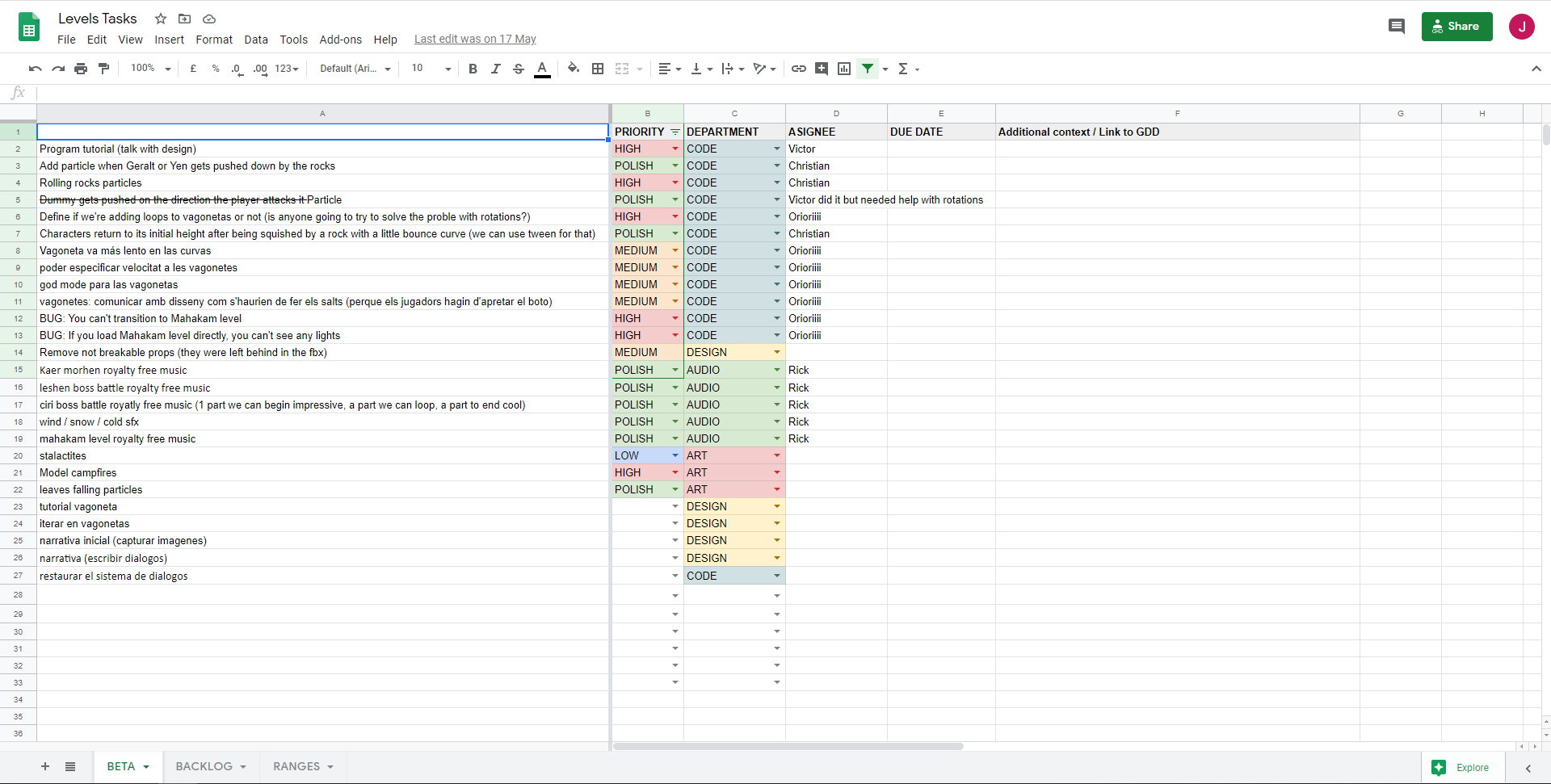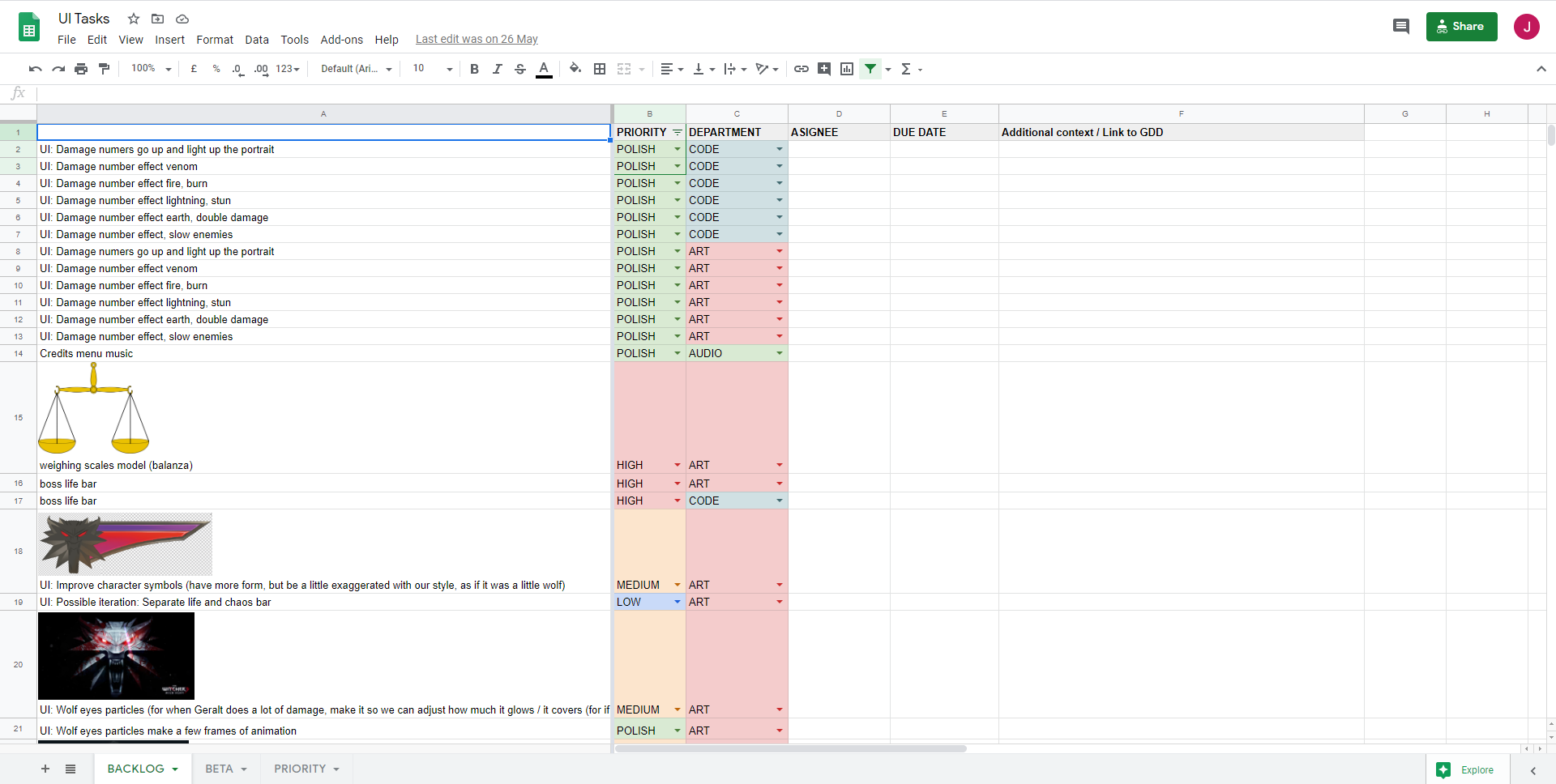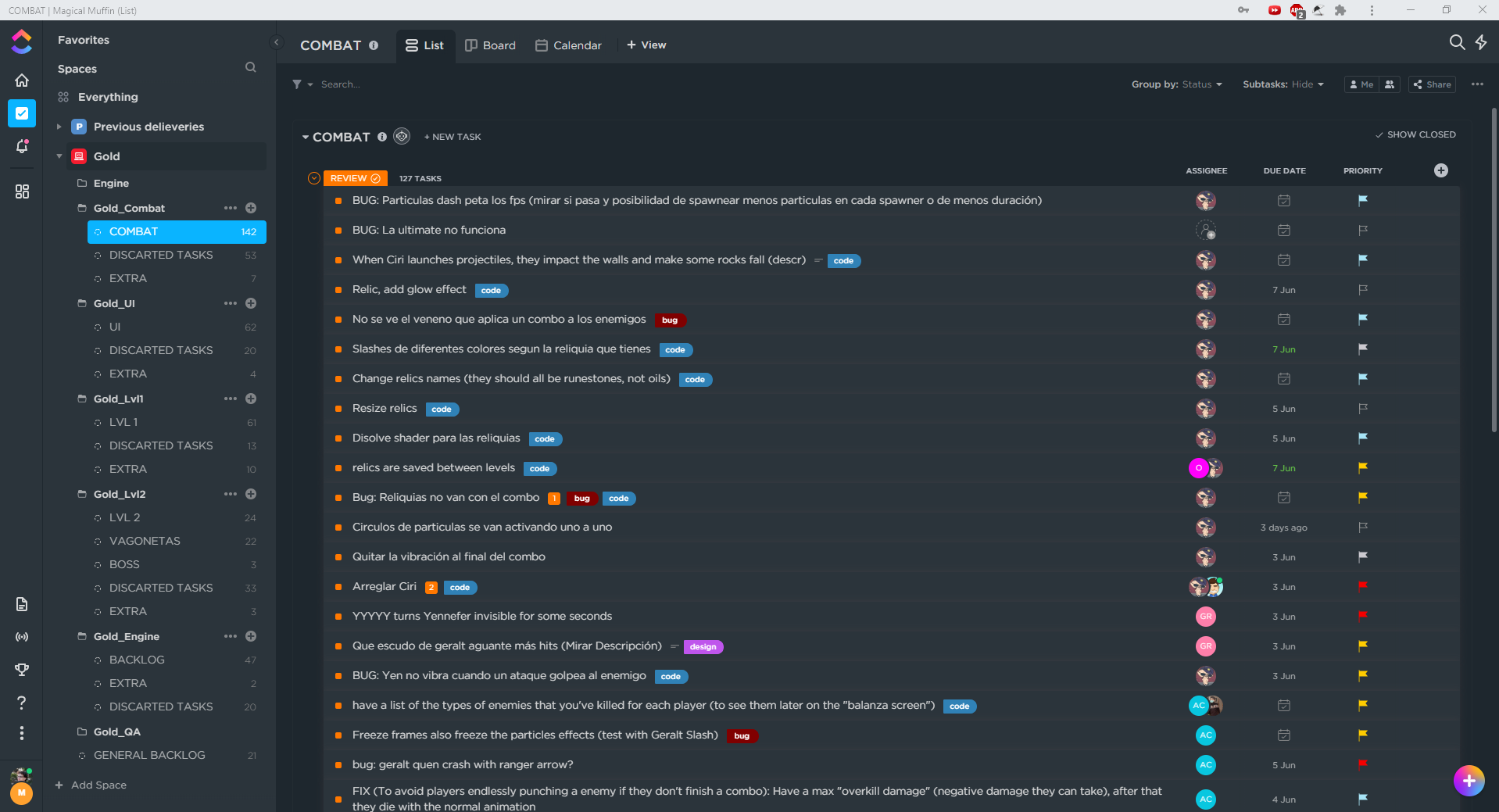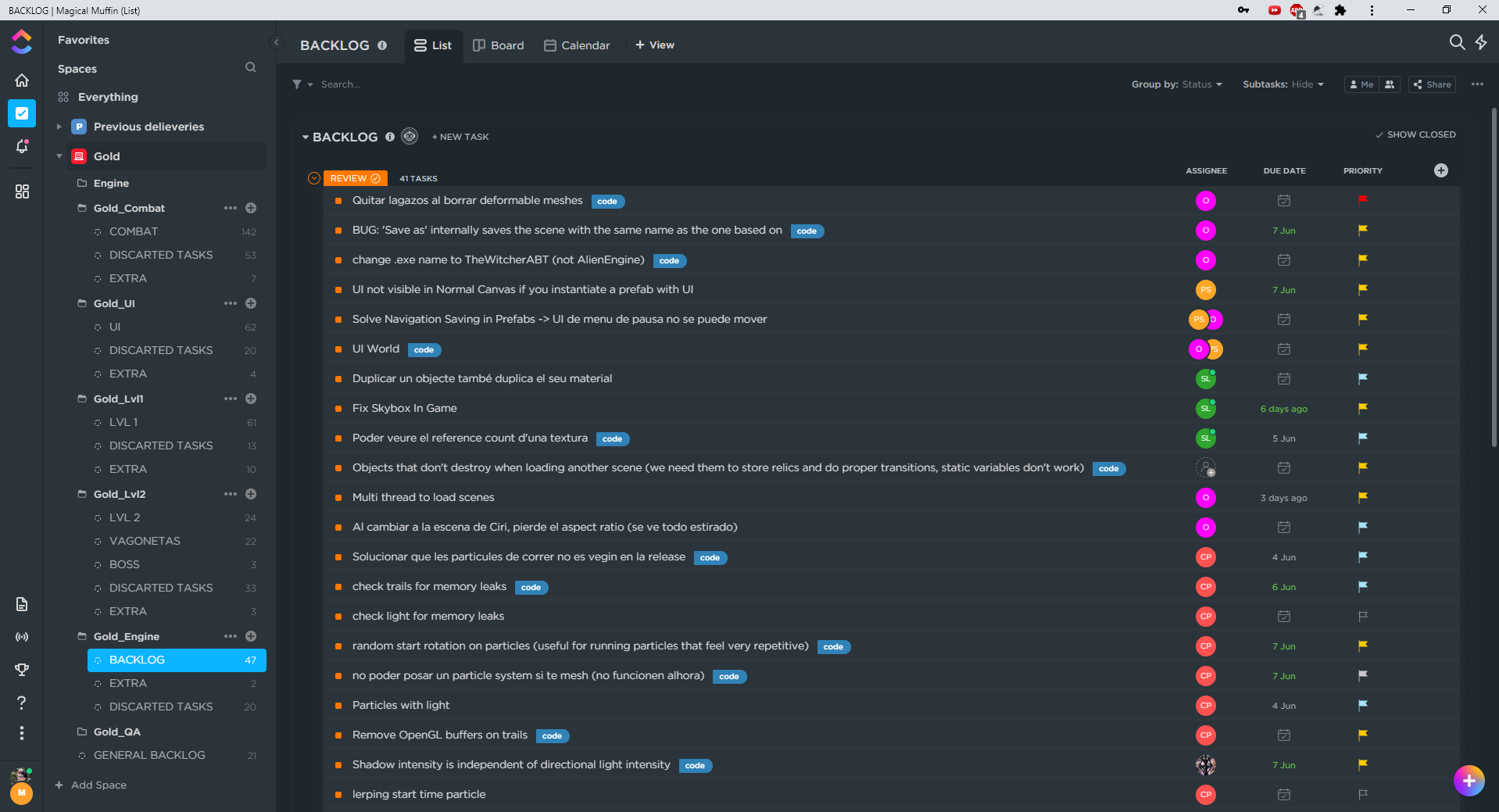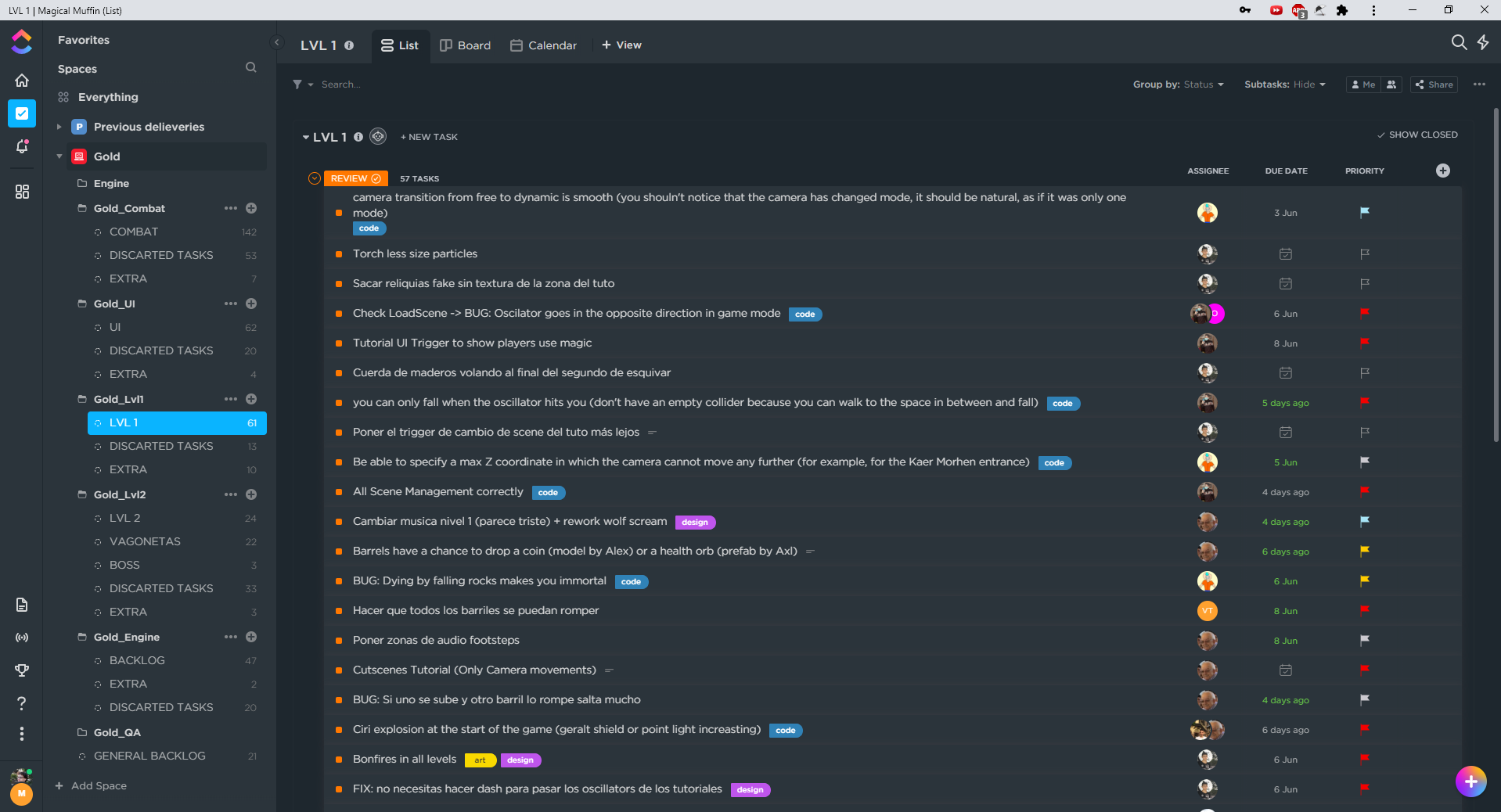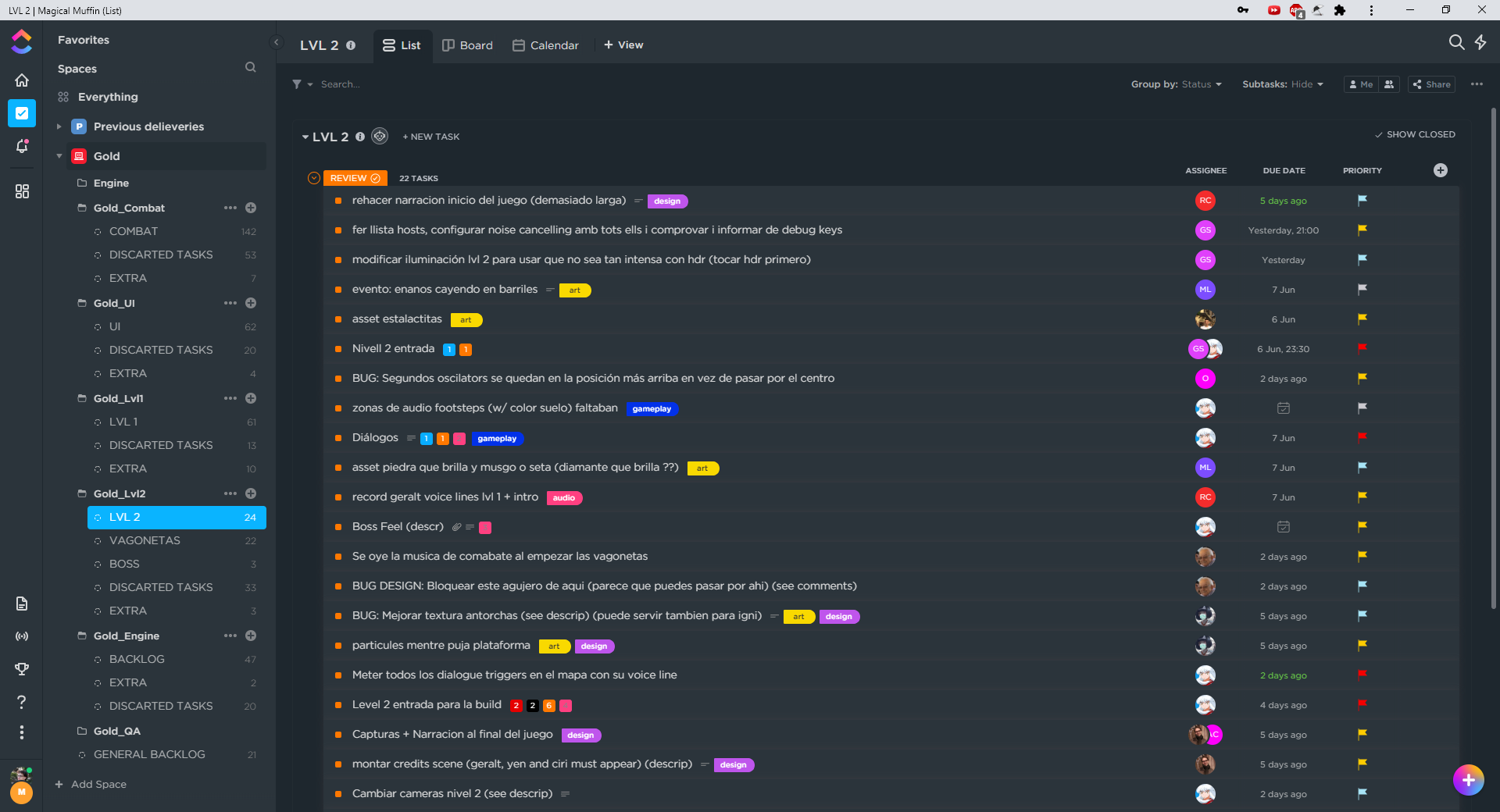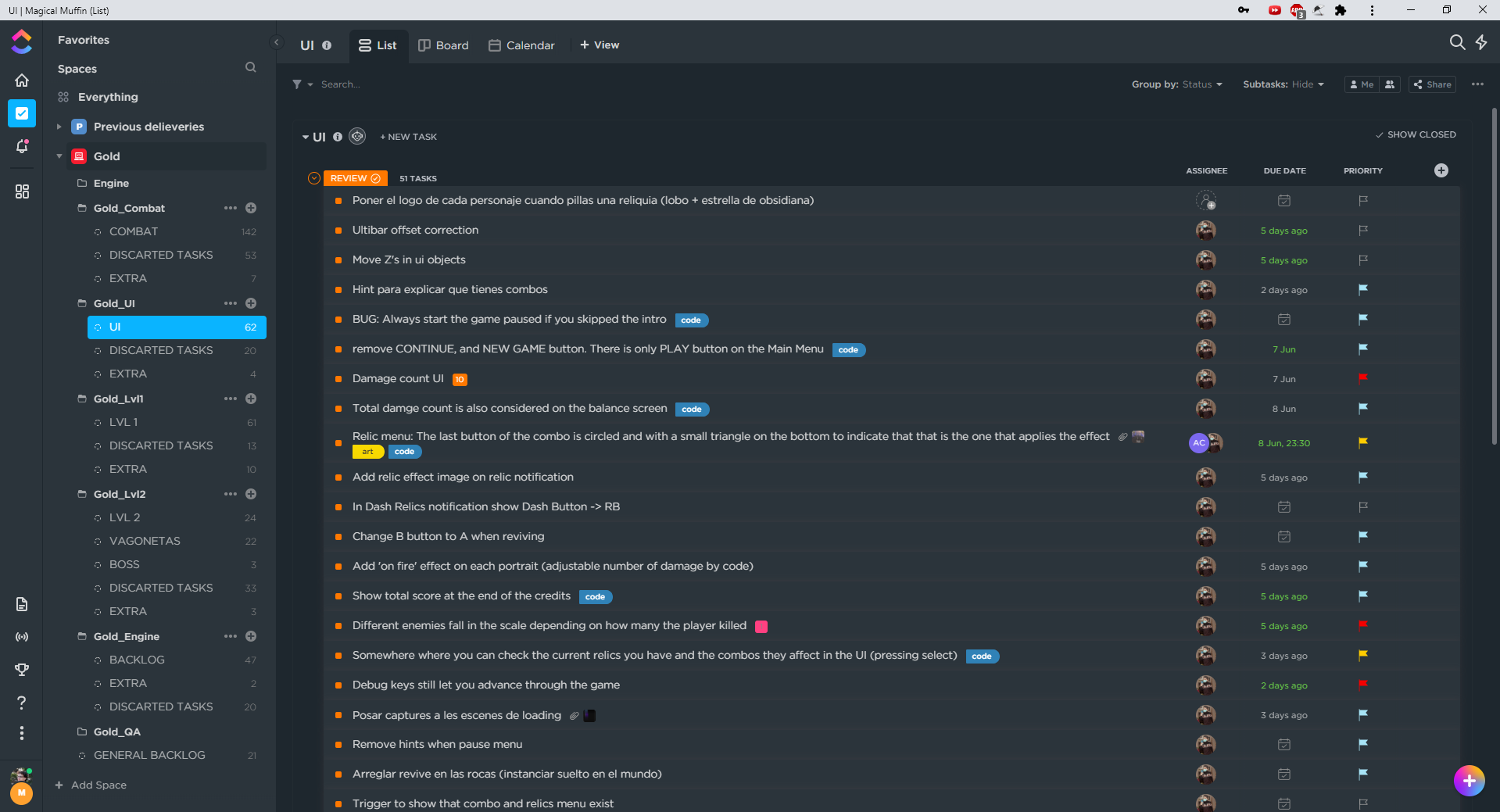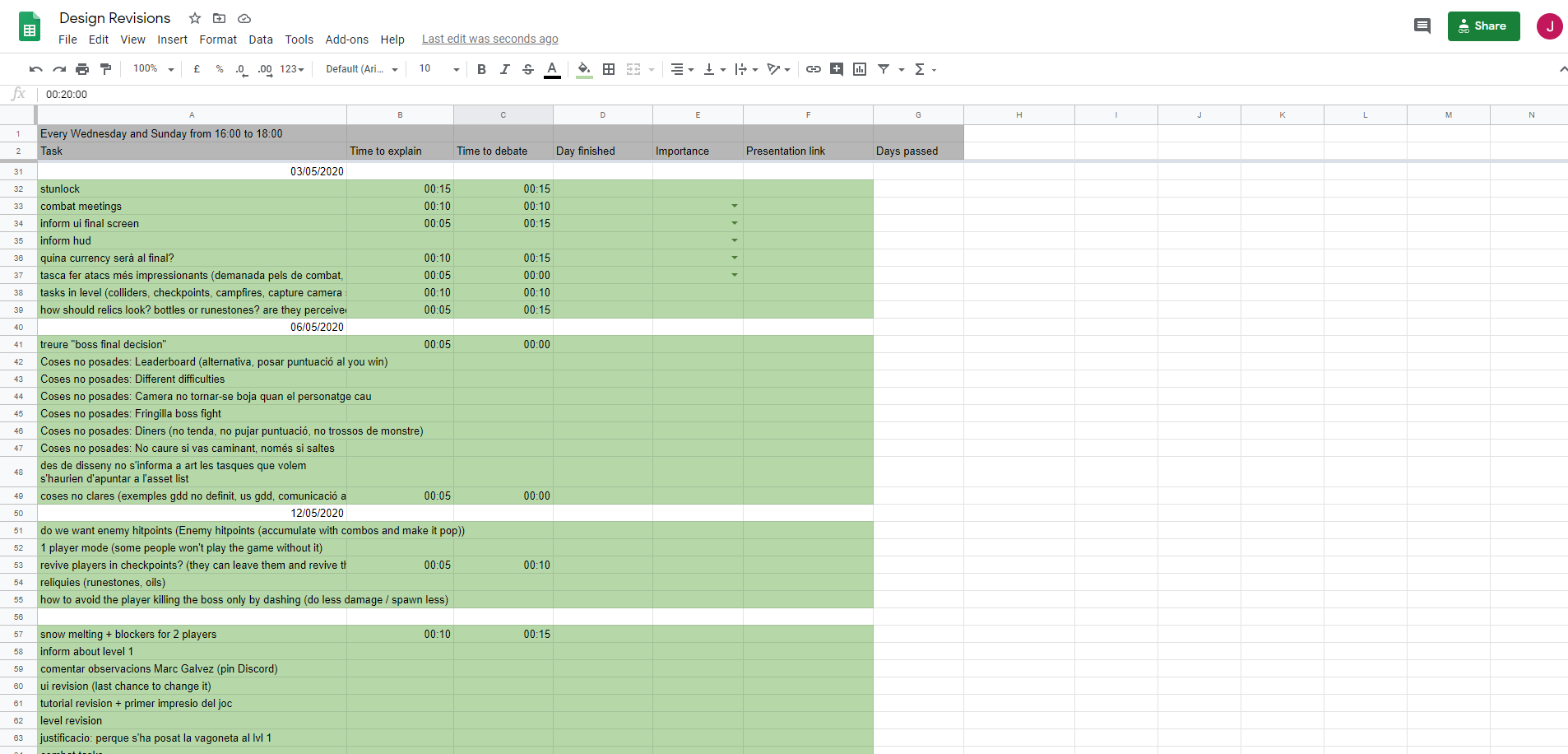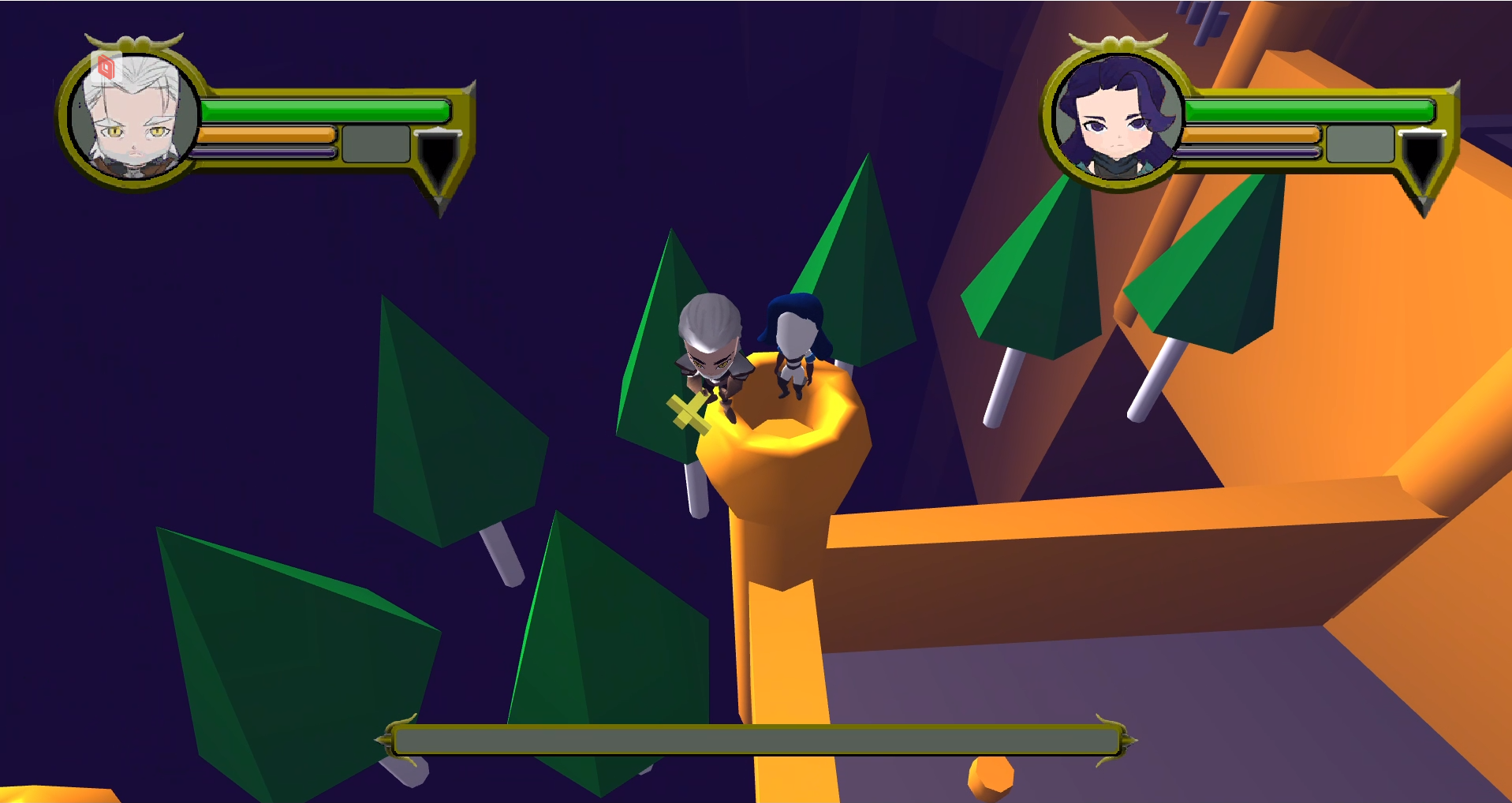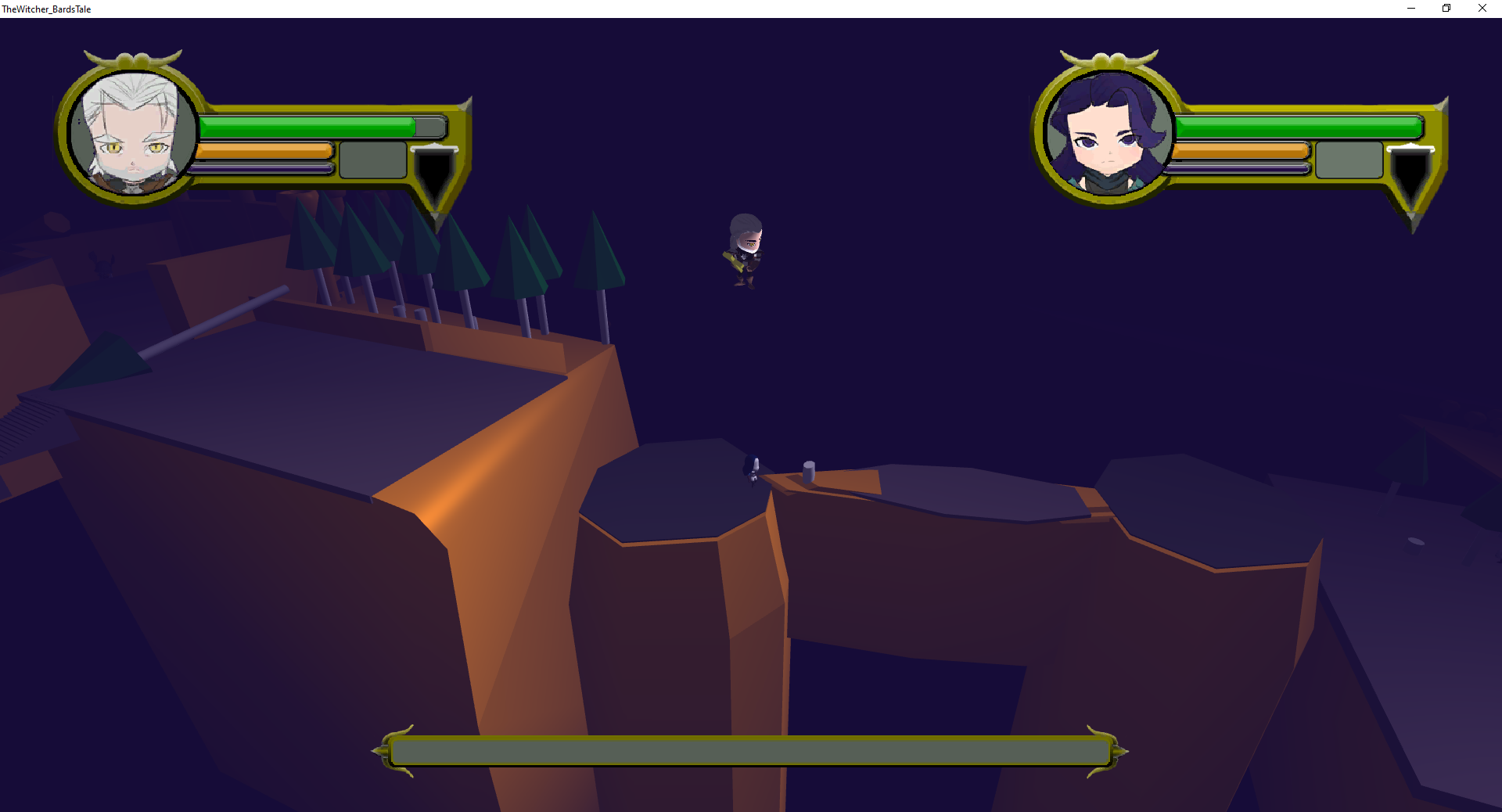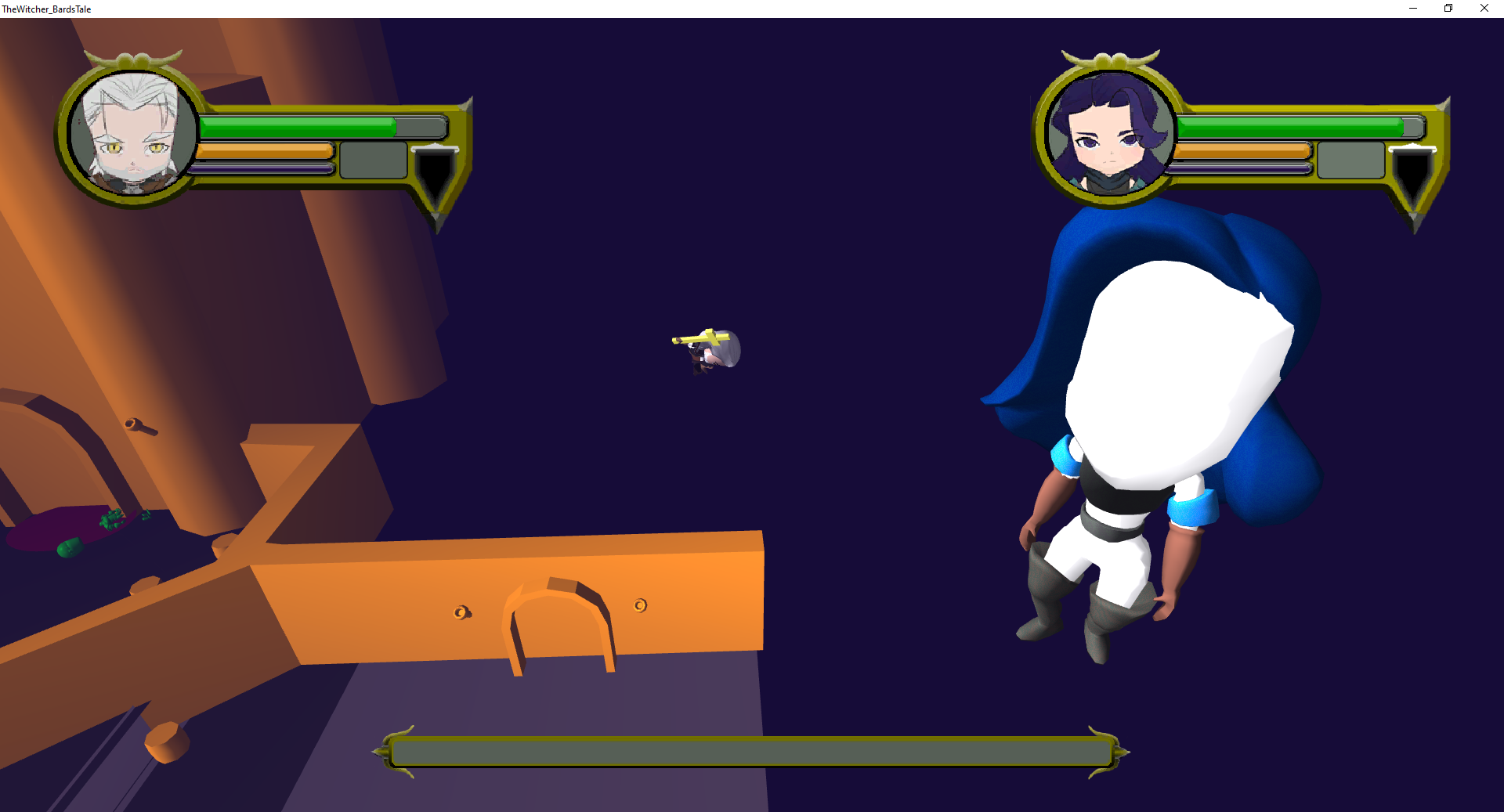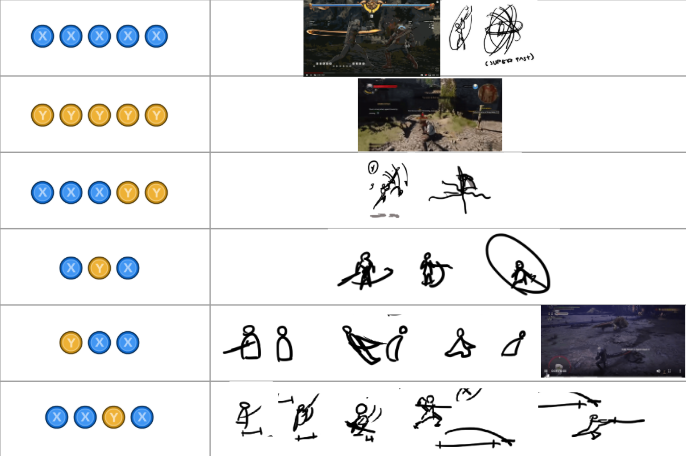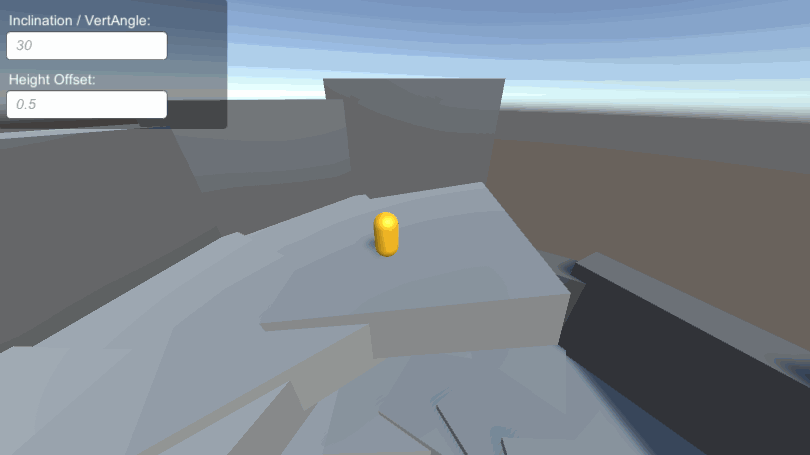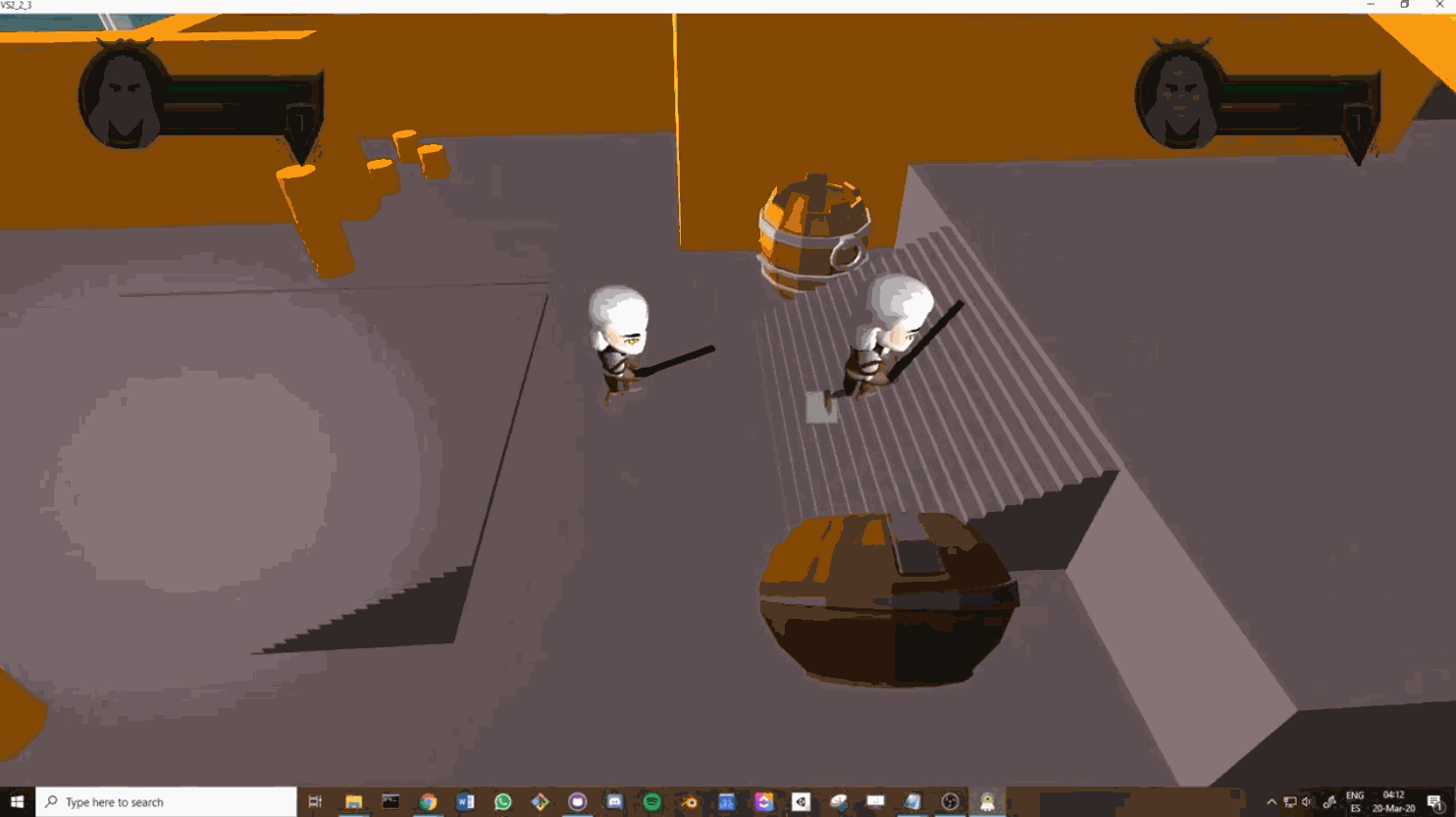Especially focusing on the parts that mattered the most to us. Such as the distribution with scrum teams to
keep the team communicated, and the retrospective meeting to detect which things could be improved and focus
on them.
From the beggining, we didn't make much use of scrum teams. The lockdown only made things worse as it
allowed us to keep working on the most comfortable way, which was by departments as we had done in the
Concept Discovery.
To solve this, we tried the making planning meetings be done by each scrum team instead of the different
departments. We prepared them the TODO list extracted from the Backlog and helped the new scrum masters
start using our agile board app (ClickUp) to assign the task and set due dates.
Later, we also gave them more organizative power and keept constant communication between the scrum masters
and the department leads.
In my opinion retrospectives are one of the most valuable and underrated meetings. A lot of people seem to
skip them because 'they are not necessary' you can keep developing just by distributing work and keep going.
But I think retrospectives give the opportunity to make the team work faster and in a more pleasant
environment.
So even if we were low on time I always tried to save some time to do a big retrospective with all the
team. From that we extracted things that we did right and problems for which we then later tried
a solution on the next sprint:
- Scrum teams weren't being useful to the overall organization.
- Leaving an encouraging comment helps a lot on keeping motivation.
When the sprint ended, we looked at the different proposals we made and evaluated if they had any effect.
I took responsability of gathering all the tasks that arised during the sprint and organizing them to focus
on the important tasks when planning the next sprint.
How it evolved:
Was the assignment where I found 2 problems which needed solution:
- A lot of the ideas that were written on the Game Design Document didn't transform into tasks, as we were
prioritizing the requirements that the teachers gave us on each assignment even if they didn't meet our
objective for the game.
- There were a lot of things that slowed the blockout, set dressing and balancing down. For example, not
being able to edit the engine simultaneously, or needing to break the prefab links to send groups of prefabs
between us, so we gave code some ideas to solve this. At the end Oriol Capdevila implemented multiscene
editing which allowed us to solve this problem.
So I gathered all the notes on a document and send them to the code lead (Jose Antonio).
I started writing the tasks directly on an Google Sheet.
Writing the problems
directly on a single file allowed me to completely skip gathering all the different notes, speeding up the
process dramatically.
I also started to dedicate more designers towards filling the asset list with clear
references, which had been a task done by the art team at the moment and creted a lot of disconnection
between the design ideas and the final assets.
I also ended up making the list public so other members
could ask for things that they considered necessary. That list would be later checked by the leads in their
respecitng meetings.
On the sprint retrospective we found that the scrum teams weren't being of much use. So I created sheets
for all the scrum
teams and distributed the tasks from the 'department sheets' to them.
On the previous sprint we detected that some teams relied on the Google Sheet instead of
using our agile board app of choice (ClickUp). So I added them on different ClickUp lists.
Designing on the same direction
After the first weeks, it was clear that a lot of different things were being designed without knowledge
of other ones. People weren't being informed on progress made by other scrums and as such the design
wasn't cohesive. The solution we chose was to organized meetings every wednesday and friday where people
investigated different options for solving problems and we took decisions considering its advantatdges and
disadvantaged.
Doing playtestings
I believe that the definitive way to test if your game is fun, is to perform playtestings. As such, I
tried to start playtesting the game as soon as possible (when we almost didn't have art). Following
the advice of Joan Pons and being
organized by Marc Galvez and Guillem Sanchez, the playtestings gave us a lot of insight on
what the players' perceptions were about our game and we adapted our design with their feedback.
Bellow you can see some bugs that our first playtesters found funny.
 Magical Muffin
Magical Muffin 